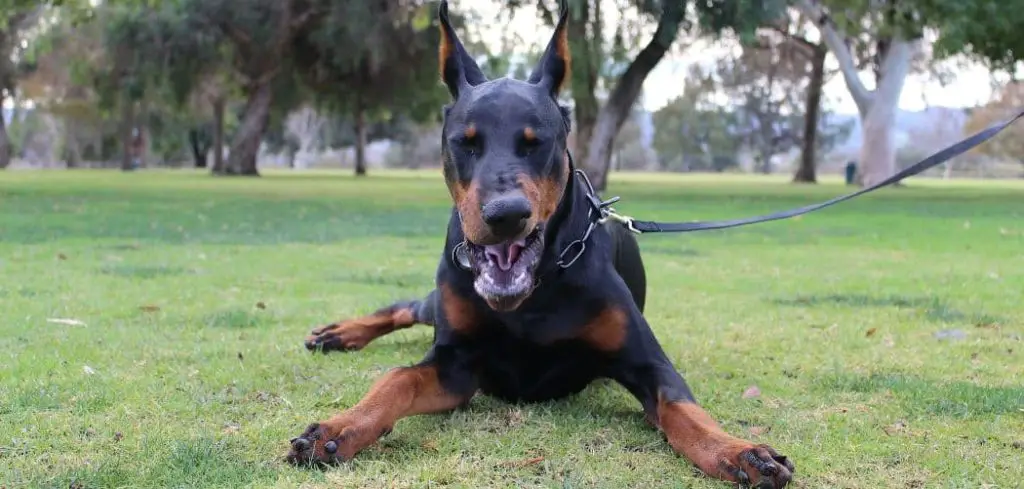If you’ve noticed your dog arching their back and refusing to eat, it’s not just an odd posture—it could be a sign of significant discomfort or even pain.
Back arching in dogs is often a natural attempt to relieve pressure or pain in the abdomen, spine, or internal organs.
When this posture is combined with appetite loss, it’s time to take things seriously.
We outline what is behind your dog’s arched back and food refusal, what you can do at home, and when you should contact your veterinarian.
Dog Arching Back and Not Eating: Why It Happens
A dog arching back and not eating could be experiencing abdominal pain, spinal issues like intervertebral disc disease (IVDD), pancreatitis, bloating, trauma, or even internal organ distress.
This body posture is a sign your dog is trying to relieve pain or protect a sensitive area. When appetite loss accompanies it, it often signals systemic discomfort that shouldn’t be ignored.

Dog Arching Back and Not Eating: Common Causes
1. Abdominal Pain (Acute Abdomen)
A common reason dogs arch their back is to reduce pressure on their abdomen when it hurts.
Causes of abdominal pain include gastrointestinal inflammation, infection, pancreatitis, or even internal bleeding.
The pain can make dogs stand stiffly, with a hunched posture, and refuse food due to nausea or discomfort.
Vomiting, diarrhea, or bloating may also appear.
Related: Dog vomiting and not eating (Causes and when to worry)
2. Intervertebral Disc Disease (IVDD)
In dogs with IVDD—especially Dachshunds, Corgis, and other long-backed breeds—a slipped or herniated disc can cause spinal pain and make them arch their back to protect the area.
This spinal discomfort may make eating or bending down painful.
Other signs include trembling, reluctance to move, or even rear leg weakness.
IVDD requires prompt veterinary evaluation and may need medication or surgery.
3. Pancreatitis
Pancreatitis causes inflammation of the pancreas and is known to trigger a classic “praying position” in dogs—front legs stretched forward, rear up, or a tightly arched back when standing.
Pancreatitis also leads to nausea, vomiting, and complete appetite loss.
It’s often triggered by eating fatty foods, and older or overweight dogs are especially at risk.
4. Gastric Dilatation-Volvulus (Bloat)
Bloat is a life-threatening emergency where the stomach fills with gas and may twist.
A bloated dog may arch their back, pace, drool, attempt to vomit without success, and refuse all food.
This condition progresses quickly and can be fatal if not treated immediately.
Large, deep-chested breeds like Great Danes, Dobermans, and Weimaraners are especially susceptible.
5. Trauma or Muscular Strain
If your dog recently fell, jumped awkwardly, or played roughly, back arching may result from a muscle strain or bruised abdomen.
Pain and stiffness can make your dog reluctant to eat or lie down.
Watch for limping, vocalization when touched, or sudden behavior changes.
6. Kidney or Liver Issues
Internal organ pain—particularly from the kidneys or liver—can trigger posture changes and appetite loss.
Inflammation or enlargement of these organs can cause discomfort, especially when your dog lies down or eats.
Eye squinting, vomiting, or changes in urination may also occur.
7. Peritonitis or Internal Infection
Infections inside the abdomen (peritonitis) often cause extreme pain and a characteristic arched back.
Dogs with peritonitis may also be very lethargic, have a fever, and refuse to eat.
This condition can result from ruptured intestines, a perforated ulcer, or trauma and is considered an emergency.
What to Do If Your Dog Is Arching Their Back and Not Eating
If your dog’s symptoms are new and they seem alert, here’s what you can try at home over the next few hours:
Keep your dog calm and avoid handling the spine or abdomen.
Offer small amounts of soft food, like boiled chicken and rice, only if they haven’t vomited.
Monitor posture, breathing, and movement for any signs of worsening pain or distress.
Do not attempt to stretch, massage, or manipulate the back—you could cause more harm.
Use a soft bed or pad to support a resting position that doesn’t strain the back.
If the back arching persists beyond a few hours or your dog still won’t eat, don’t delay further care.
When to Call or Visit Your Vet
You should contact your veterinarian right away if:
Your dog is arching their back for more than 12 hours with no improvement.
They refuse all food and water or are vomiting.
You notice trembling, whining, panting, or signs of obvious pain.
Your dog struggles to walk, jump, or use stairs.
Their belly appears bloated, hard, or tender to the touch.
You see signs of trauma, paralysis, or collapse.
A vet may perform X-rays, an ultrasound, bloodwork, or a neurological exam to determine the cause.
Treatment may include pain medication, anti-inflammatories, IV fluids, or surgery in more serious cases.
Related: Dog Vomiting and Not Eating but Drinking Water (What it means)
Key Takeaway
A dog arching their back and not eating is rarely a coincidence.
Whether the issue lies in the digestive system, the spine, or the internal organs, your dog’s posture is a signal that they’re hurting.
Appetite loss is a common companion to pain or nausea and should never be brushed off—especially when combined with physical symptoms like arching.
Your dog relies on you to notice when something isn’t right. If they’re showing unusual postures and refusing food, it’s time to act.
Prompt veterinary evaluation can prevent complications, relieve discomfort, and get your dog back to feeling like themselves.
